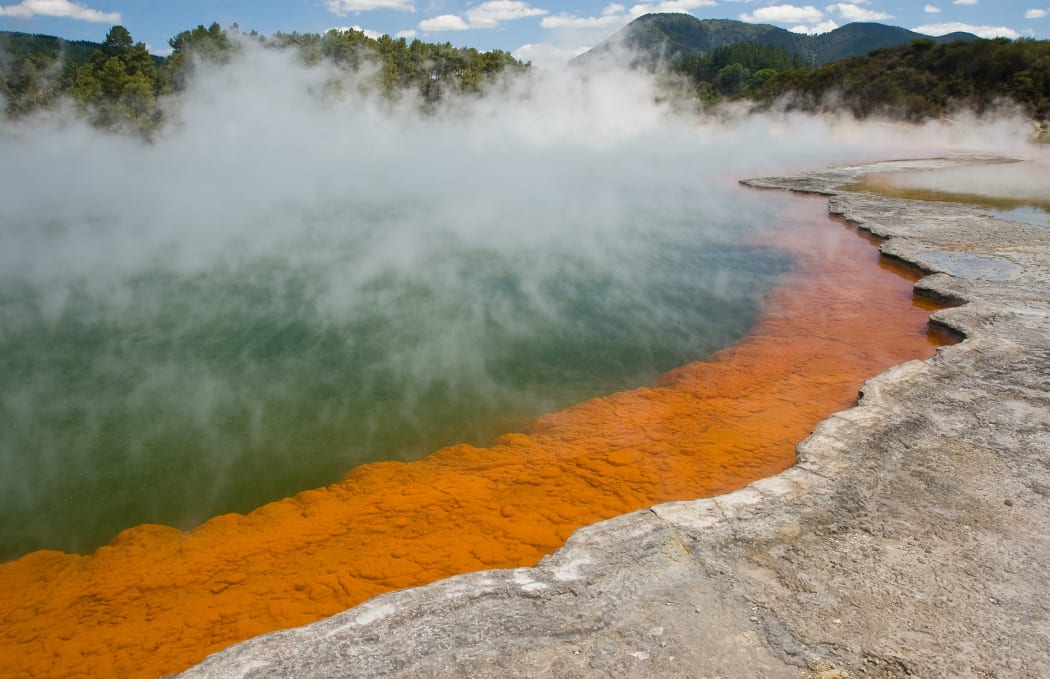New Zealand scientists have published the first major results from their study of the unique & extremely resilient organisms living in the Taupō Volcanic Zone, in the world's most comprehensive look at geothermal springs.
Over two years, researchers from the 1000 Springs Project carried out a systematic sampling of more than 1000 springs - to find out what lives in the hot, steamy and chemically extreme environments.
University of Waikato professor Craig Cary co-led the project, and he tells Nine to Noon’s Kathryn Ryan they discovered 28,000 different microorganisms.

Champagne Pool Photo: Supplied
“It’s probably 10 times anything that’s ever been done before.
“The diversity that unravelled was not what we expected, we didn’t expect to see such a high diversity and uniqueness within the site.”
He says it’s the most comprehensive such study ever done, with the range of hot pool conditions in the region providing a unique breadth of scale.
“The beauty of the Taupō area is that we have the extreme from one scale for battery acid all the way down to say your household bleach or drain cleaner conditions, and temperatures that go from maybe 13 [degrees Celsius] to maybe 100C.”
This allowed a wide-ranging mapping of different organisms.
“Our ability to compare one pool to the other, we needed to do everything exactly the same in every pool.
“That’s very different to what’s happened overseas because multiple investigators using different tools and different processes and different procedures.
“While they can bring them together, they can’t bring them together the way that this project did.”
This allowed the scientists to figure out that the organic make-up of the higher-temperature pools tend to be more dependent on heat, whereas lower-temperature ones are more dependent on acidity.
“Because you’ve got such a unique chemistry in each pool, each pool has its own unique community, and that broad scale look is what’s enabled us to resolve that,” he says.
He says it should allow them to identify what gives the organisms their survival capabilities, which could have benefits into the future.
“When you have both of those major stresses working together the organisms that live in there are very unique and very special - both from their ability to survive those conditions and also how they operate in those conditions.”
He says it offers the potential for a laboratory based biotech industry based on the knowledge gained from the bacteria.
“We have an archive of the DNA that was collected from each one of these pools and we would never need to go back to the pools to collect any more samples.
“Everything is in-house now and can be done at the bench.”
The results could have a range of applications, including producing enzymes that help with biofuel production, or reducing the environmental impact of creating catalysts for pharmaceutical drugs.
He says the study would not have been possible without the help of local iwi.
“Our iwi partners … were very much concerned and appreciate the importance of tribal knowledge and indigenous knowledge and protecting that.
“The path is one of walking together and making sure everyone understands the next step and making sure that all the precautions and protections are in place if we move down this way.”

